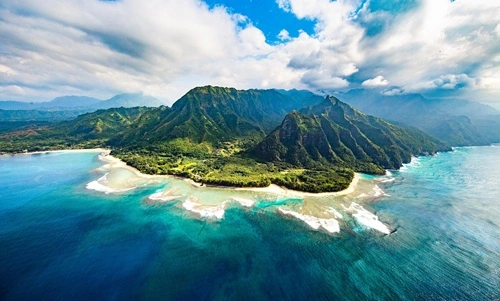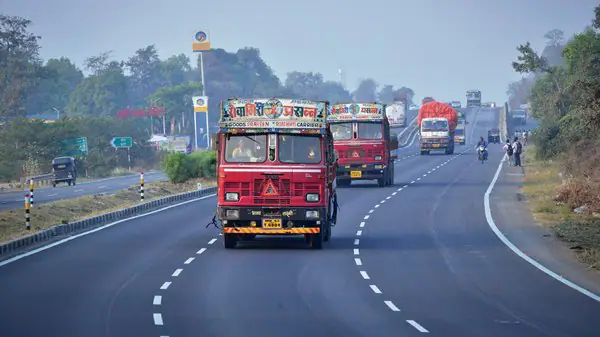Hawaii, the 50th state of the United States, is a tropical paradise renowned for its breathtaking landscapes, rich cultural heritage, and warm aloha spirit. Comprising eight main islands, Hawaii offers a diverse array of experiences, from pristine beaches and volcanic wonders to vibrant festivals and historical landmarks. Whether you’re planning a visit or simply curious about this enchanting destination, here are over ten interesting and fun facts about Hawaii that showcase its unique charm.

1. Hawaii Is the Only U.S. State Made Up Entirely of Islands
Hawaii is the only state in the U.S. composed entirely of islands, totaling 137 volcanic islands spread over 1,500 miles. The eight main islands are Oahu, Maui, Hawaii (also known as the Big Island), Kauai, Molokai, Lanai, Niihau, and Kahoolawe. Each island has its own distinct personality and attractions, offering everything from bustling city life to secluded natural retreats.
2. Home to the World’s Most Active Volcano
The Big Island of Hawaii is home to Kilauea, one of the most active volcanoes on Earth. Kilauea has been erupting continuously since 1983, shaping the island’s landscape and adding new landmass. Visitors can explore Hawaii Volcanoes National Park to witness the awe-inspiring power of nature, hike through volcanic craters, and even see lava flows when conditions permit.
3. Hawaii Is the Only U.S. State That Grows Coffee Commercially
Thanks to its rich volcanic soil and ideal climate, Hawaii is the only state in the U.S. where coffee is grown commercially. The famous Kona coffee, cultivated on the slopes of Hualalai and Mauna Loa on the Big Island, is renowned worldwide for its smooth, rich flavor. Coffee enthusiasts can tour local plantations to learn about the cultivation process and sample fresh brews.
4. A Melting Pot of Cultures
Hawaii’s population is one of the most ethnically diverse in the world, with a rich tapestry of cultures including Native Hawaiian, Japanese, Filipino, Chinese, Korean, and Portuguese influences. This diversity is celebrated through various festivals, cuisine, music, and art. The Aloha Festivals, held annually, showcase Hawaiian culture with hula performances, traditional music, and parades.
5. The Hawaiian Language Is Official
Hawaii is the only state with two official languages: English and Hawaiian. Efforts have been made to revitalize the Hawaiian language, which was once at risk of disappearing. Hawaiian words and phrases are commonly used in daily life, and you’ll often hear locals greeting each other with “aloha” (hello/goodbye) and saying “mahalo” (thank you).
6. Hawaii Has Its Own Time Zone
Hawaii operates on Hawaii Standard Time (HST) and does not observe Daylight Saving Time. This means the state is typically 2-3 hours behind the West Coast of the mainland U.S., depending on the time of year. The consistent daylight hours contribute to the laid-back lifestyle and allow for extended evenings to enjoy the sunset and outdoor activities.
7. Birthplace of Surfing
Surfing originated in Hawaii and is deeply ingrained in the local culture. Ancient Hawaiians considered surfing not just a sport but an art form and spiritual experience. Today, Hawaii is home to some of the world’s most famous surf spots, like the Banzai Pipeline on Oahu’s North Shore. Whether you’re a seasoned surfer or a beginner, the islands offer waves for all skill levels.
8. Mauna Kea: Tallest Mountain from Base to Peak
When measured from its base on the ocean floor, Mauna Kea on the Big Island is the tallest mountain in the world, reaching over 33,500 feet, surpassing Mount Everest. The summit stands at 13,796 feet above sea level and is home to world-class astronomical observatories. The mountain’s high altitude and clear skies make it an ideal location for stargazing.
9. Unique Wildlife and Flora
Hawaii boasts a unique ecosystem with many endemic species not found anywhere else on Earth. The state bird, the Nene (Hawaiian goose), and the state flower, the yellow hibiscus, are just a couple of examples. The islands are also a haven for marine life, including humpback whales, green sea turtles (honu), and vibrant coral reefs, making it a paradise for snorkeling and diving enthusiasts.
10. No Billboards Allowed
In an effort to preserve its natural beauty, Hawaii is one of four states that prohibit billboards. This ban ensures that the scenic landscapes remain unobstructed by advertising, allowing residents and visitors to fully appreciate the islands’ picturesque vistas. This policy reflects Hawaii’s commitment to environmental conservation and aesthetic appeal.
11. Hawaii Was Once an Independent Kingdom
Before becoming a U.S. state, Hawaii was an independent kingdom ruled by its own monarchy. King Kamehameha the Great unified the Hawaiian Islands in 1810. The ʻIolani Palace in Honolulu, the only royal palace on U.S. soil, served as the official residence of the Hawaiian monarchs. Visitors can tour the palace to learn about Hawaii’s royal heritage and the overthrow of the monarchy in 1893.
12. Hawaii Has a Royal Connection to Surfing Dogs
Adding a modern twist to ancient traditions, Hawaii hosts annual dog surfing competitions where canines ride the waves alongside their owners. Events like the Duke’s OceanFest honor Duke Kahanamoku, an Olympic swimmer and surfing icon, celebrating Hawaii’s surf culture in a fun and family-friendly way. These events also often serve as fundraisers for local charities.
13. The Only U.S. State with Tropical Rainforests
Hawaii is the only state in the U.S. with tropical rainforests, boasting lush vegetation, cascading waterfalls, and diverse wildlife. The island of Kauai, known as the “Garden Isle,” is particularly famous for its verdant landscapes. The Hoh Rain Forest offers hiking trails that wind through dense foliage and offer glimpses of rare plant species and hidden natural pools.
14. A Hub for Renewable Energy
Hawaii is leading the way in renewable energy adoption. With abundant sunshine, strong trade winds, and geothermal activity, the state is harnessing natural resources to reduce dependence on imported fossil fuels. Hawaii has set an ambitious goal to achieve 100% renewable electricity by 2045, promoting solar, wind, hydroelectric, and geothermal energy projects across the islands.
15. Spam Is a Culinary Staple
Introduced during World War II, Spam became a popular food item in Hawaii due to its long shelf life and affordability. Hawaiians embraced Spam, incorporating it into local dishes like Spam musubi—a slice of grilled Spam atop a block of rice, wrapped together with nori seaweed. Hawaii consumes more Spam per capita than any other state, and it’s a beloved ingredient in many homes and restaurants.
16. Home to the Rainiest Place on Earth
Mount Waialeale on the island of Kauai is one of the wettest spots on the planet, receiving an average of over 450 inches of rainfall annually. This excessive rainfall contributes to Kauai’s lush landscapes and numerous waterfalls, such as the breathtaking Wailua Falls. The heavy precipitation creates a unique environment that supports diverse plant and animal life.
17. Hawaii Celebrates Statehood Day
Statehood Day, or Admission Day, is a public holiday celebrated on the third Friday in August to commemorate Hawaii’s admission to the United States on August 21, 1959. The day is marked by various events, including cultural festivals, parades, and educational activities that reflect on Hawaii’s journey to statehood and its cultural heritage.
18. Pioneer in Ocean Conservation
Hawaii has established the Papahānaumokuākea Marine National Monument, one of the largest protected marine areas in the world. Covering approximately 583,000 square miles, it preserves pristine coral reefs, deep-sea marine habitats, and significant cultural sites. The monument reflects Hawaii’s commitment to preserving marine ecosystems and indigenous cultural practices.
19. A Unique Tradition of Lei Giving
The lei, a garland made of flowers, leaves, shells, or feathers, is a symbol of affection and hospitality in Hawaiian culture. Lei are given for various occasions, such as birthdays, graduations, weddings, or welcoming visitors. The tradition embodies the spirit of aloha, representing love, respect, and appreciation. Lei Day is celebrated annually on May 1st, featuring hula performances, music, and lei-making contests.
20. Hawaii’s Night Sky Is Protected
To preserve the clarity of its night skies, particularly for astronomical research atop Mauna Kea, Hawaii has enacted strict lighting regulations to reduce light pollution. The state’s commitment to dark skies not only benefits scientific observation but also allows residents and visitors to experience stunning views of stars and celestial events, making Hawaii a premier destination for stargazing.
Conclusion
Hawaii’s unique blend of natural wonders, cultural richness, and innovative spirit makes it a truly special place within the United States. From its geological marvels and environmental initiatives to its vibrant traditions and welcoming aloha spirit, Hawaii offers endless opportunities for exploration and discovery. Whether you’re drawn to its sunny beaches, fascinated by its volcanic landscapes, or interested in its cultural heritage, Hawaii invites you to experience the magic of the islands firsthand.


